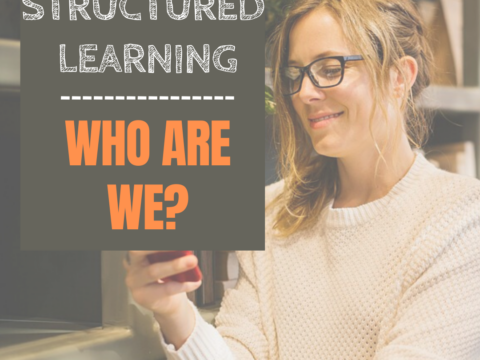 Here’s a free lesson plan from the newest Ask a Tech Teacher book, How to Achieve Common Core with Tech–the Reading Strand. This covers K-8, 315 Standards, and has 14 projects.
Here’s a free lesson plan from the newest Ask a Tech Teacher book, How to Achieve Common Core with Tech–the Reading Strand. This covers K-8, 315 Standards, and has 14 projects.
BTW, the lines at the front of each step are to track progress in case you don’t complete it in one class period. Feel free to print out for classroom use:
Essential Question
How can games help me learn reading skills?
Summary
Students play an online game (i.e., Samorost) to hone reading and math skills. By end of unit, 5th through Middle School will review up to 7 math anchor standards, 8 reading anchor standards, 6 RST standards, 4 reading informational standards, and 1 reading foundational standard.
Big Idea
Games encourage students to read closely, determine and analyze central ideas, interpret meaning, assess point of view/purpose, differentiate between arguments, and understand sometimes complex material.
Materials
Internet, class Twitter account, student blogs, digital citizenship links
Teacher Preparation
- Have student blogs set up.
- Have a class Twitter account set up with #hashtags to differentiate topics.
- Have digital citizenship links on class internet start page if required.
- Plan to spend time playing game to understand its applications to reading and math skills.
- Something happen you weren’t prepared for? No worries. Common Core is about critical thinking and problem solving. Show students how you fix the emergency without a meltdown and with a positive attitude.
- This lesson plan can be done in classroom or tech lab. Consider co-teaching:
- Grade level teacher can reinforce academic topics
- Tech lab teacher can reinforce tech skills
Steps
____Required skill level: familiarity with using games for educational purposes.
____What is ‘Gamification’ of education? Help students come up with ‘use of game design elements in educational contexts’. What are some favorites? Do they see connections between those games and education (do they learn while having fun)?
____In fact, games are especially suited to reading skills. They skip the mechanics (grammar and punctuation) that give lots of students traumas and concentrate on comprehension—the real reasons why we read.
____Additionally—and outside traditional skills students acquire through reading–through virtual worlds, students can impact events around them with no prejudice based on youth. Properly-selected games invoke problem-solving, critical thinking, logical thinking, and collaboration—all significant in Common Core Standards, ISTE guidelines, 21st Century classrooms.
____Common Core Standards for Mathematical Practice emphasis traits common to games:
- Make sense of problems and persevere in solving them—students understand problem and how to solve it within constructs of the game.
- Reason abstractly and quantitatively—students immerse themselves in game’s environment. This requires they abstractly understand what is occurring and visualize the process.
- Construct viable arguments and critique the reasoning of others—the nature of games requires students interact with other players. They understand the goal and discern which characters can assist in its completion.
- Model—games model a reality students likely will never experience, but often wish they could.
- Use appropriate tools strategically—as with real life, there are only so many tools at a player’s disposal. Determine what those are and how to use them to achieve goals.
- Look for and make use of structure—life works better with a plan.
- Look for and express regularity in repeated reasoning—learn community rules. The ones that work can be repeated.
____There’s a good argument for placing games in the Common Core math book (How to Achieve Common Core with Technology: the Math Strand). And you could, but the focus here is not as much on product as process—how are students getting to college and career? Common Core Reading Anchor Standards are relevant to (select) game-playing:
- Read closely to determine what text says and make logical inferences—in most games, players can’t progress to the next level without doing this
- Determine central ideas and analyze development—required to understand the game’s big picture because few are based on common knowledge.
- Analyze how and why individuals, events, ideas develop and interact—how to determine game mechanics.
- Interpret words and phrases—many words are game-specific (domain-specific) and designed so players figure out meaning without reading a manual.
- Assess how point of view or purpose shapes content and style—how else will players determine good guys from bad?
- Integrate and evaluate content presented—games often include plot clues. These must be decoded to move players forward.
- Delineate/evaluate argument and specific claims, including validity of reasoning as well as relevance and sufficiency of evidence—players are expected to use their brains to solve problems. That’s the fun.
- Read and comprehend complex texts proficiently—games are often complex (consider Minecraft—but rarely does a student give up in their effort to play it), designed to be so; it doesn’t discourage participation.
____When you use games to strengthen reading skills, consider these best practices:
- Plan time for a learning curve—some students won’t need one ; others will.
- Have students work in groups—this helps non-gamers with mechanics.
- Be involved—don’t let gamers intimidate you from observing and directing
- Set behavioral expectations—your goals are different from typical game-play; let students know what they are.
- Pick great games—make sure whichever you select is fun and challenging. Samorost is perfect, but there are others (like Minecraft).
- Align goals with learning—make this clear to students.
- caffold non-gamers—this can be done with groups.
- Update parents consistently—they may wonder about using a game to learn reading. Keep them in the loop. Let them know goals and successes.
- Ignore unrealistic expectations on how quickly results populate—students learn at their own rate. Don’t rush it.
- Differentiate instruction—some students may not be into Samorost-type of game. Have options.
- Make failure fun—game purpose isn’t to win; it’s to learn reading skills.
- Fit games into class schedule—probably 45 minutes.
- Expect students to play online games in many locations—Encourage that.
- Vary assessments—it’s good to differentiate for student needs.
____There are many educational games (click here for a list). Pick one that works with your curriculum, unit of inquiry, rhythm. We use Samorost I.
____In Samorost 1 (Samorost 2 is available, but for a fee), the idea is that Samorost explores space ship threatening to crash into his homeland. To play, you simply point and click until you find out how to solve a series of puzzles and brain teasers–sequentially linked to form an adventure story. The game contains no dialogue; solving puzzles is accomplished by clicking onscreen elements in correct order. Solving a puzzle transports player to next screen.
____As they play:
- Students blog about:
- why Samorost is scared when he sees the spaceship
- why he decides to explore it
- what he finds along the way
- how close reading of text allowed student to progress through levels
- what central ideas are and how they were developed
- how events and ideas interacted
- what domain-specific words were uncovered as well as their meanings
- how Samorost’s point of view and purpose shaped game
- validity of game’s plot and reasoning
- complexity of game and information
- where student experienced problems and how they were solved
- where student experienced success and why
- Students create a timeline of progress and post it to blog
- Students take notes on game progress using a strategy discussed in class
- Students post daily to student blog or class Twitter account
____In any online game, being a good digital citizen is paramount. Remind students of digital rights and responsibilities they accept every time they cross the threshold into digital world. If you need guidance on this:
- click here for a list of digital citizenship websites
- click for a K-8 digital citizenship curriculum
____Expect gaming to be collaborative, where you as teacher learn with students. If you flip your classroom, this is a great unit.
____Involve parents through student blogs and your open-door policy. Do not let them hear about ‘games at school’ through casual comment. Invite them to play if/when possible.
____When unit ends, reflect on it yourself: What did students accomplish? Did they exhilarate in learning for themselves rather than a grade? Did it accomplish your reading skills goals?
____Problems at beginning of lesson are the most common students will face. Expect students to be able to solve these independent of assistance—as well as hardware problems.
____Occasionally when students have difficulty doing what you are teaching, ask why. And listen. You may be surprised by the answer.
____Throughout class, check for understanding. Expect student decisions that follow class rules.
____As you teach, incorporate domain-specific vocabulary and expect students to do the same.
____Remind students to transfer knowledge to class or home.
____A note: Every chance you get, use technology to facilitate teaching. Lead by example. Students will see you use tech quickly and facilely and follow your good example. They want to use tech. Don’t discourage them!
Common Core (truncated for brevity; refer to original Standards for exact wording)
Standards for Mathematical Practice
- CCSS.Math.Practice.MP1–Make sense of problems and persevere in solving them
- CCSS.Math.Practice.MP2–Reason abstractly and quantitatively
- CCSS.Math.Practice.MP3–Construct viable arguments and critique the reasoning of others
- CCSS.Math.Practice.MP5–Use appropriate tools strategically
- CCSS.Math.Practice.MP6–Attend to precision
- CCSS.Math.Practice.MP7–Look for and make use of structure
- CCSS.Math.Practice.MP8–Look for and express regularity in repeated reasoning
Anchor Standards
- CCSS.ELA-Literacy.CCRA.R.1–Read closely to determine what text says and make logical inferences; cite specific textual evidence when writing or speaking to support conclusions drawn from the text
- CCSS.ELA-Literacy.CCRA.R.2–Determine central ideas and analyze their development; summarize supporting details
- CCSS.ELA-Literacy.CCRA.R.3–Analyze how and why individuals, events, ideas develop and interact
- CCSS.ELA-Literacy.CCRA.R.4–Interpret words and phrases used, including technical, connotative, and figurative meanings, and analyze how specific word choices shape meaning or tone
- CCSS.ELA-Literacy.CCRA.R.6–Assess how point of view or purpose shapes the content and style of a text
- CCSS.ELA-Literacy.CCRA.R.7–Integrate and evaluate content
- CCSS.ELA-Literacy.CCRA.R.8–Delineate and evaluate the argument and specific claims in a text
- CCSS.ELA-Literacy.CCRA.R.10–Read and comprehend complex literary and informational texts proficiently
5th Grade
- CCSS.ELA-Literacy.RF.5.3–Know and apply grade-level phonics and word analysis skills in decoding words
- CCSS.ELA-Literacy.RI.5.2–Determine main ideas of text and explain how they are supported by key details
- CCSS.ELA-Literacy.RI.5.3–Explain relationships between individuals, events, ideas, or concepts based on text
Middle School
- CCSS.ELA-Literacy.RI.6.2–Determine a central idea of a text and how it is conveyed through particular details; provide a summary distinct from personal opinions or judgments
- CCSS.ELA-Literacy.RI.6.3–Analyze how a key individual, event, or idea is introduced, illustrated, elaborated
- CCSS.ELA-Literacy.RI.6.4–Determine meaning of words used in text
- CCSS.ELA-Literacy.RI.6.6–Determine author’s point of view or purpose and explain how it is conveyed in text
- CCSS.ELA-Literacy.RST.6-8.4–Determine meaning of symbols, key terms, and domain-specific words used
- CCSS.ELA-Literacy.RST.6-8.5–Analyze the structure an author uses to organize a text
- CCSS.ELA-Literacy.RST.6-8.6–Analyze author’s purpose in providing an explanation, describing a procedure, or discussing an experiment in a text
Extension:
- Have student select a game that satisfies lesson goals and ‘sell’ you on it.
More Information:
- If using this for assessment, see full list of assessment items by grade level at end of unit.
- Lesson questions? Go to Ask a Tech Teacher.
Want more? Here’s a 30-minute video on using technology with Common Core reading standards.
Jacqui Murray has been teaching K-18 technology for 30 years. She is the editor/author of over a hundred tech ed resources including a K-12 technology curriculum, K-8 keyboard curriculum, K-8 Digital Citizenship curriculum. She is an adjunct professor in tech ed, Master Teacher, webmaster for four blogs, an Amazon Vine Voice, CSTA presentation reviewer, freelance journalist on tech ed topics, contributor to NEA Today, and author of the tech thrillers, To Hunt a Sub and Twenty-four Days. You can find her resources at Structured Learning.





































1 thought on “Common Core Reading–What if Students Don’t Like Reading”
Comments are closed.